The Complete Guide to E-E-A-T
Guides by daydream
Nov 12, 2024

If you’re creating content with the goal of ranking well in search results, you’re probably no stranger to the concept of E-E-A-T. The acronym, which stands for Experience, Expertise, Authoritativeness, and Trustworthiness, is a critical framework Google uses to assess the quality and credibility of content on the web.
Below, we explain the role of E-E-A-T in SEO, how the criteria has evolved over the years, and how you can better optimize your content for these principles.
What you’ll learn:
Why Google developed E-E-A-T
Why E-E-A-T matters, especially for YMYL content
Practical examples of E-E-A-T to learn from
How E-E-A-T affects programmatic SEO
How to optimize content for E-E-A-T
A brief history of how E-E-A-T came to be
Google first established the foundation for E-E-A-T in 2014, beginning with simply E-A-T: Expertise, Authoritativeness, and Trustworthiness. These three pillars appeared in the fifth version of Google’s Search Quality Guidelines, the handbook created to help thousands of third-party contractors known as “Search Quality Raters” give feedback on search results.
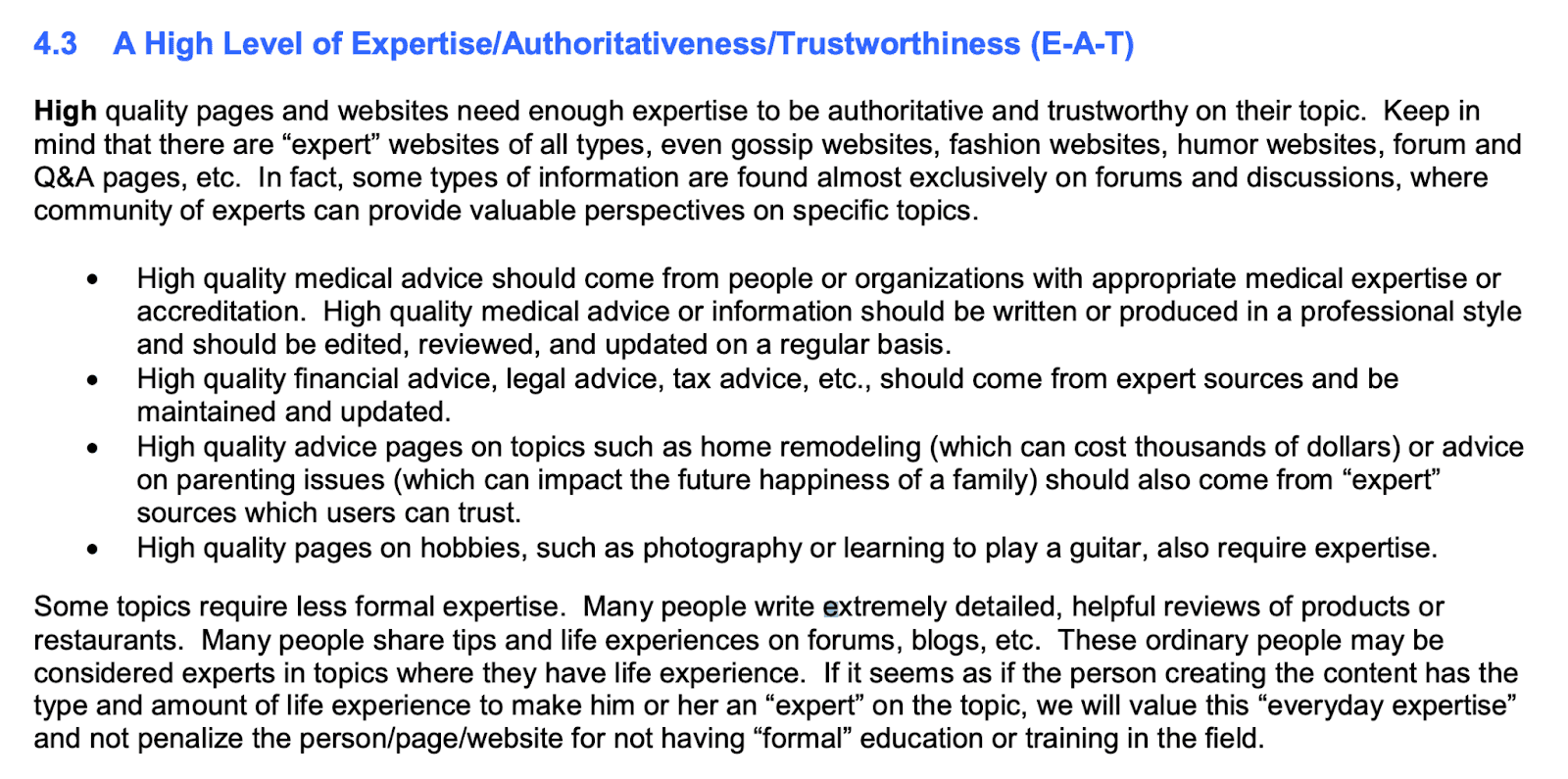
While Google updates its Search Quality Guidelines periodically, the introduction of the E-A-T concept marked a particularly pivotal moment in SEO history because it gave more concrete parameters around expertise for different subjects.
For example, describing content with the highest level of E-A-T, Google’s 2014 guidelines state:
“Formal expertise is important for topics such as medical, financial, or legal advice. Expertise may be less formal for topics such as recipes or humor. An expert page on cooking may be a page on a professional chef’s website, or it may be a page on the blog of a home cooking enthusiast. Please value life experience and ‘everyday expertise.’ For some topics, the most expert sources of information are ordinary people sharing their life experiences on personal blogs, forums, reviews, discussions, etc.”
In December 2022, Google added “Experience” to the acronym, making it officially E-E-A-T.
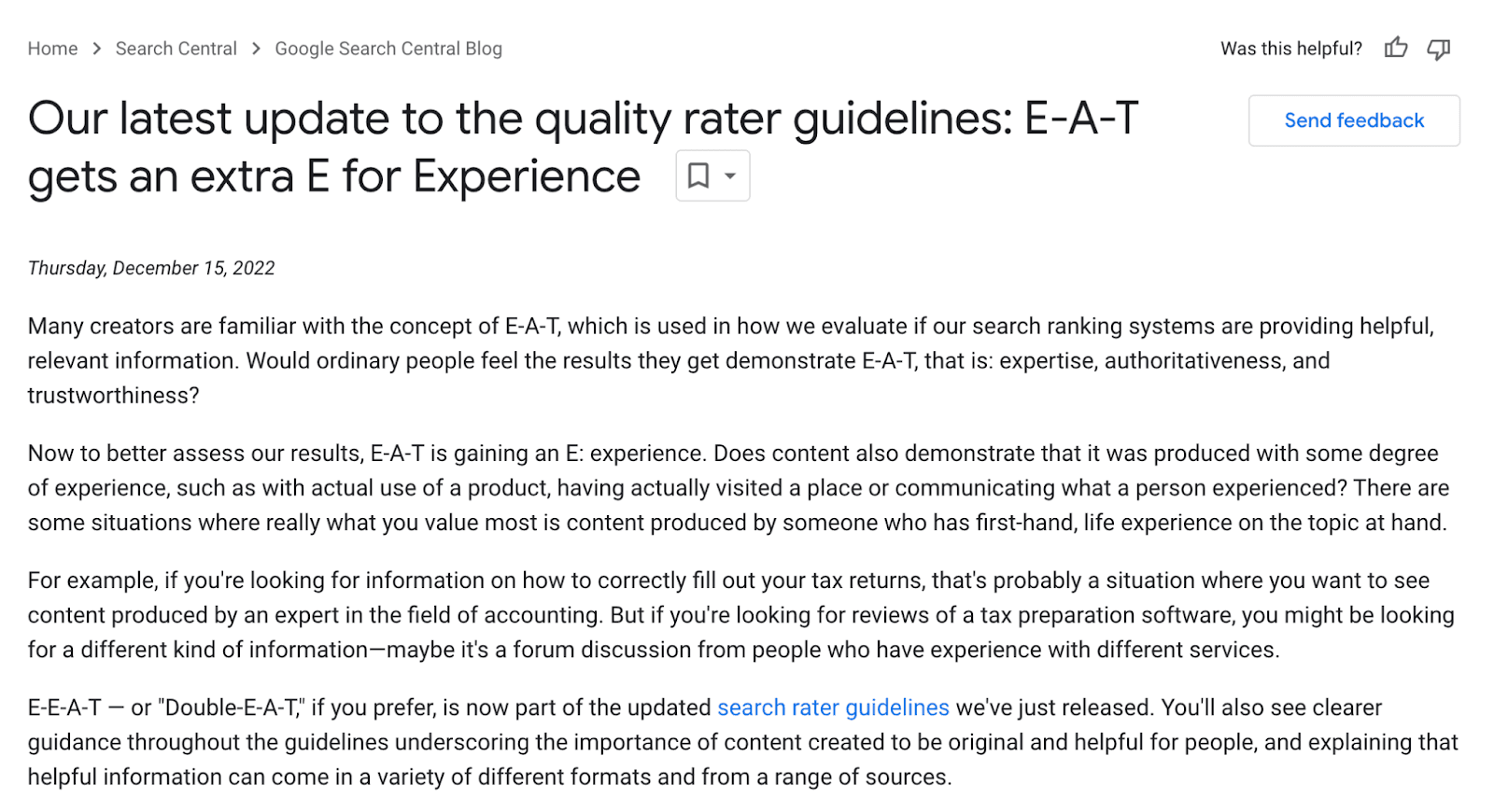
With a focus on firsthand, real-world insights, the new E underlined Google’s emphasis on content creators’ personal engagement with a subject as well as their professional credentials.
Coming just a few weeks after the release of ChatGPT, the acronym’s evolution to E-E-A-T was no doubt a preemptive move against mass-generated content created solely with AI. Indeed, in today’s online world, where AI content is more widespread, E-E-A-T has become an indispensable quality benchmark.
While Google does not penalize content for being created with AI, it’s reiterated time and again the importance of content that demonstrates E-E-A-T. Google’s March 2024 core update, for instance, penalized spammy, low-quality content created more for search than for people. This shift underscores the value of real human input—through social media engagement, user reviews, and genuine interaction—which bolsters trustworthiness in ways that AI alone cannot replicate.
Why E-E-A-T matters, especially for YMYL content
The importance of E-E-A-T cannot be understated, especially when applied to content that, according to Google, “could potentially impact the health, financial stability, or safety of people, or the welfare or well-being of society.” Google labels this kind of material as "Your Money or Your Life" (YMYL) content.
Examples include pages that cover:
Advice about investments, taxes, and retirement planning
Information about health, drugs, and specific diseases or conditions
Legal recommendations on topics like divorce, child custody, and estate planning
Safety protocols in the event of accidents and natural disasters
News about current events with societal impact, like elections or ongoing violence
For these particular topics, E-E-A-T provides an essential standard for accurate and reliable information.
With Google’s mission to “organize the world's information and make it universally accessible and useful,” it’s the search engine’s priority to surface information that users can rely on for life-affecting decisions. Whether users seek answers on medical procedures or financial advice, the E-E-A-T criteria guide Google’s Search Quality Raters, asking them to consider the qualities in relation to:
The purpose of a page
The potential for the page to cause harm
The page’s topic
The information provided about the site and content creator
That said, the pillars of E-E-A-T are not a direct ranking factor. Instead, E-E-A-T serves as a guideline for Search Quality Raters to evaluate content. Their feedback then influences Google’s ranking formulas and algorithms.
Practical examples of content with low, medium, and high E-E-A-T
To better understand E-E-A-T in action, it’s helpful to consider how different websites demonstrate varying levels of these standards. Note that each level’s rating is a reflection of the content’s consistency, factual accuracy, and how much it fosters user trust.
Low E-E-A-T
Sites that score low in E-E-A-T are those with little to no author credentials and feature vague or unsubstantiated information. They may lack references and bylines, making it difficult for readers to find out about authors’ backgrounds.
Google’s 2024 Search Quality Guidelines list a few examples of content that reflects poor E-E-A-T:
Lack of experience: A restaurant review written by someone who has never eaten at the restaurant
Lack of expertise: An article about how to skydive written by someone with no expertise in the subject
Lack of authority/trust about a topic: Tax form downloads provided on a cooking website
Lack of trustworthiness: A shopping page with minimal customer service information
It also cites an old article from the news outlet News Everyday titled “Getting Rid Of Toxins After The Holiday Season; Its Not As Hard As Imagined.”

Notice how the article revolves around medical advice, a topic that sits outside of the publisher’s news wheelhouse. Although the screenshot above doesn’t capture the full piece of content, there is no author bio that explains the writer’s expertise on the subject.
Medium E-E-A-T
Medium-quality pages describe content that’s informative but lacks a robust author background or authoritative endorsements. For instance, that might be a personal finance blog created by general writers without industry expertise.
Interestingly, Google describes two types of pages that fit this category:
Pages with nothing wrong, but that are nothing special
Mixed pages, with some redeeming qualities as well as signs of low quality
Its 2024 Search Quality Guidelines features Wikipedia’s article about baroque pearls as an example of a medium-quality page. Although the article has an “adequate” level of E-E-A-T, Googles notes that it “doesn’t display characteristics associated with a High rating, such as effort in the form of interesting and meaningful content.”
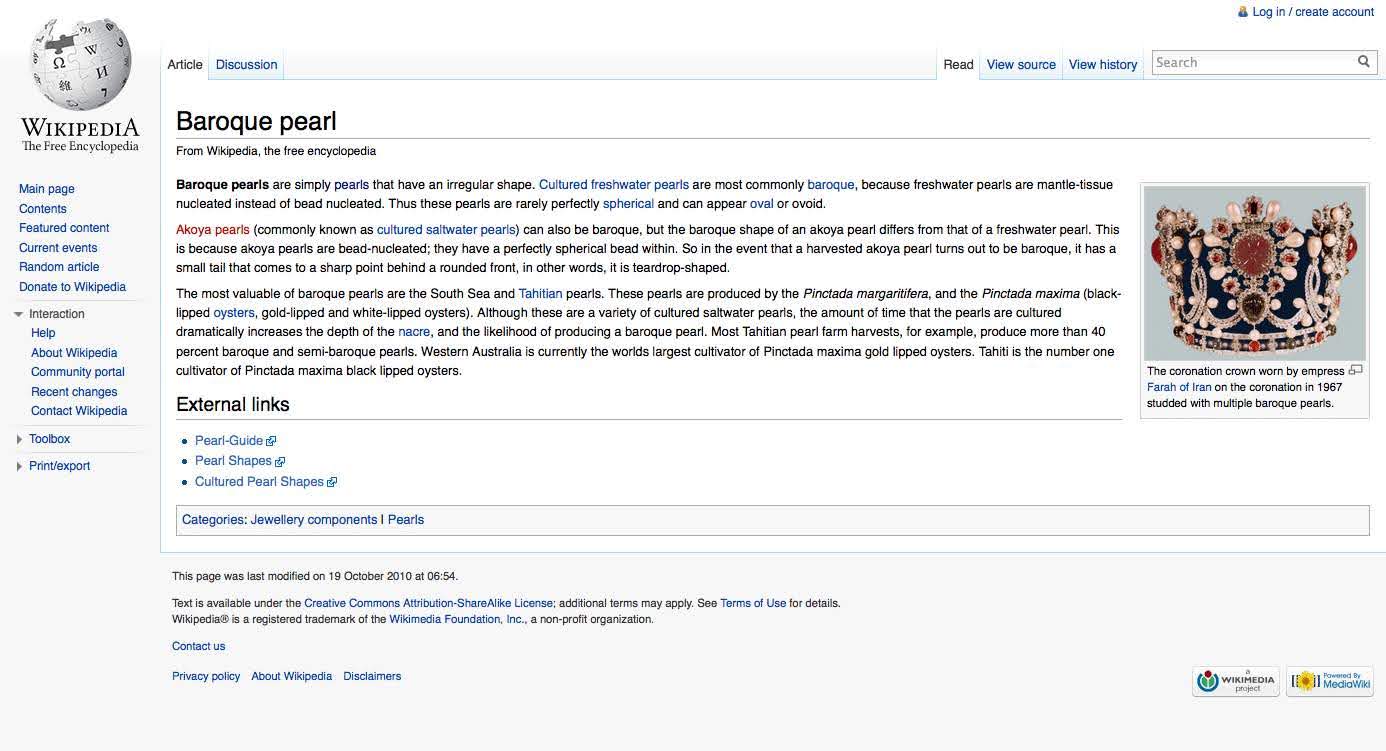
High E-E-A-T
According to Google, high-quality pages “serve a beneficial purpose and achieve that purpose well.” They demonstrate a high level of effort or originality, and are often associated with websites that have good reputations. For instance, Mayo Clinic’s content is written and reviewed by medical professionals, backed by data, and frequently cited by others in the field.
Google also offers a parenting article from The New York Times’ Motherlode column, titled “Should Strollers Be Banned?” as an example of content scoring highly in E-E-A-T.
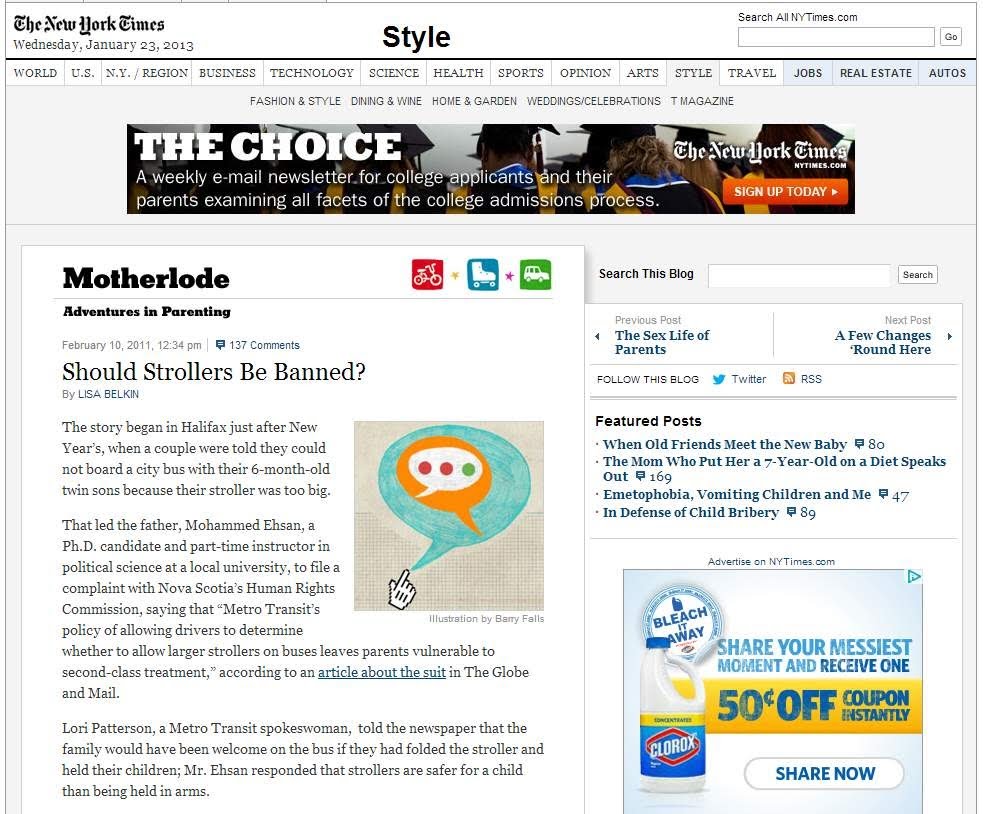
Having won several awards in journalism, The New York Times has a positive reputation, and the writer, Lisa Belkin, is an established author known for her parenting articles.
Highest E-E-A-T
Finally, going a step further, Google recognizes pages of the highest quality—content distinguished for their very high level of effort or originality, website reputation, and trustworthiness. Since content runs a wide gamut of topics, Google defines a few categories and how the highest-quality pages appear:
News: Accurate, in-depth, and original reporting with info that would not otherwise be known had a piece of content not been published
Art and media: Unique videos, images, writing, photography, etc. created with a high level of skill, talent, and effort
Informational content: Accurate, comprehensive, clear, and original content that reflects expert consensus and meets the standards of the given topic’s industry
Consider news articles from The New York Times or Los Angeles Times, where content is created by seasoned professionals, reviewed by experts, and widely regarded as trustworthy. Google also identifies the fact-checking website Snopes as another example of demonstrating the highest E-E-A-T. Articles like its page titled “Was a Mermaid Discovered on the River John in 1918?” demonstrate high trust and expertise because of the writers’ thorough research and site’s positive reputation.
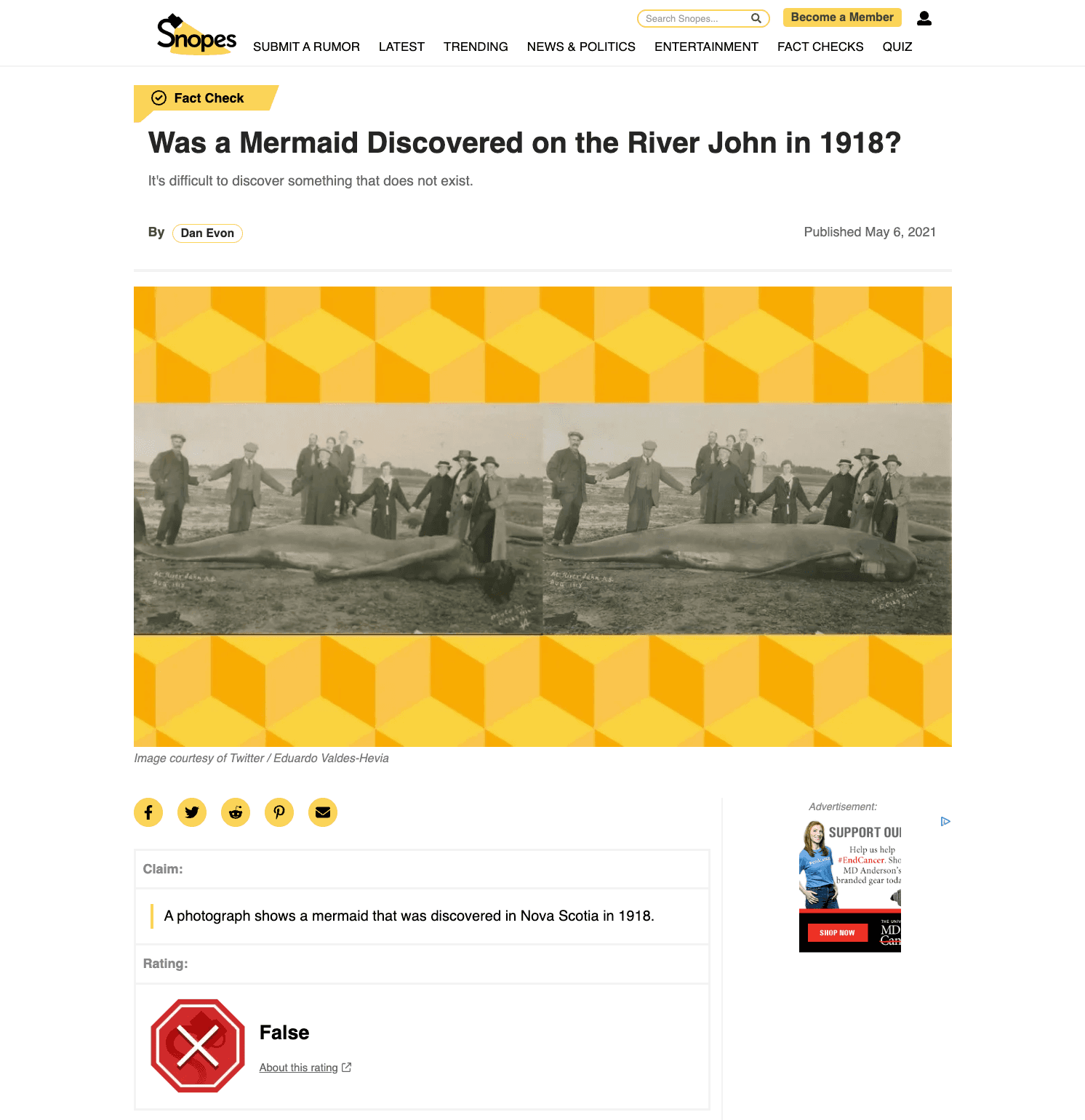
How to optimize content for E-E-A-T
While E-E-A-T isn’t a direct ranking factor, optimizing for it can improve your content’s SEO performance. To that end, we recommend four best practices to enhance your site’s E-E-A-T.
Invest in high-quality, in-depth content. Ensure each piece is well-researched, thorough, and informative. Remember to cite reputable sources and be transparent about where your information comes from.
Build author credibility and brand reputation. Leverage professionals’ expertise on your “About” page or your authors’ profile page by sharing relevant credentials. If a topic does not directly relate to your area of expertise, reconsider whether you should publish content about it. Ask yourself, “What gives you authority about a topic?” Formal training and firsthand experience are meaningful reasons for creating content—having neither of these may be a red flag.
Incorporate personal experiences, reviews, and testimonials. Add authenticity with independent reviews, testimonials, case studies, and firsthand accounts. However, beware of featuring content where there is a conflict of interest. For instance, Google’s guidelines note that featuring “reviews” from influencers paid to promote your product may count against your site’s trustworthiness.
Avoid spammy practices. Refrain from shortcuts that could undermine content quality and credibility—for instance, using article spinners or plagiarizing content. The only exception to Google’s policy about not copying existing work is publishing licensed or syndicated content.
E-E-A-T in programmatic SEO is about balancing scale and authenticity
Since programmatic SEO (pSEO) leverages automation for high-volume content creation, you might find it contradictory with the ideals of E-E-A-T. But in reality, the two concepts are not mutually exclusive. The challenges of achieving E-E-A-T in pSEO simply revolve around balancing scale with human authenticity.
Content created solely by AI might achieve consistency but without a human touch, it can fall short of offering original insights. This is especially relevant for YMYL content, in which case ensuring programmatic content is vetted by professionals is crucial to implementing an effective pSEO strategy.
To align with Google’s E-E-A-T standards, YMYL topics like health, finance, and legal advice require a higher degree of human oversight. For these sensitive areas, not only should programmatic content be reviewed by human experts, but the reviewers should ideally hold respected credentials. For instance, trained physicians should review medical content and certified financial planners should review financial advice. Credentialed reviewers provide credibility and depth to the content, ensuring it meets the quality standards necessary to build user trust.
In contrast, for non-YMYL verticals, pSEO can deliver solid results without heavy human oversight. This is especially true for domains where a high volume of long-tail search queries exist. Consider companies like Zapier and Canva, which compete in industries where users’ personal safety or financial stability are not directly impacted by the information provided. Both companies have succeeded in using pSEO to scale their content efforts.
If your content falls into the YMYL category, know that it does not rule out the viability of pSEO. Incorporating human review is easier than it sounds.
In the programmatic content workflow, it could simply involve having an editor with subject matter expertise review an article. For more detailed reviews, you might also consider hiring fact-checkers. Only once a piece of content gets the reviewer’s seal of approval should it then be greenlit for publishing.
The bottom line: For pSEO to succeed in high-stakes YMYL industries, regular reviews by human experts are essential. This may slow production pace relative to non-YMYL pSEO, but it’ll also significantly enhance content’s credibility and impact.
Accelerate growth with E-E-A-T and pSEO
E-E-A-T’s role in SEO isn’t merely about following Google’s guidelines—it’s about building a foundation of trust with quality, user-centered content. Doing so can help drive sustainable long-term growth without the threat of getting penalized by new algorithm updates.
At daydream, we empower companies to create high-quality pSEO strategies that emphasize real expertise and experience. If you’re ready to elevate your content strategy with E-E-A-T-aligned practices, reach out to thenuka@withdaydream.com.